Atelier Ryza's Alchemy 3 is a very popular game now, and there are many mechanical elements in the game that you need to understand, so when new players get started, they may not know the background of "Atelier Ryza's Alchemy 3" I’m troubled by the forward-looking story and gameplay, so where can I introduce it? This site has it here to help you solve your troubles, come and take a look!
The content that can currently be revealed is limited to the Keuken Island area (the first generation game area) + Clelia area (the first new area featuring glass and gem processing), and the content is also limited to the first new character Fed Before Rika joined the team.
"Atelier Ryza 3" showed a strong sense of nostalgia from the beginning - the story takes place in the Keuken Island area: in the distant waters suddenly appeared a mysterious archipelago of unknown origin: Kirk Islands, in Ryza While Sha and her team went to investigate, there was always a dark and evil voice calling her in her mind (Is it you? Frostmourne)... The ancient ruins in the center of the archipelago obviously hide huge secrets , and the unraveling of this secret lies in the adventure of Lysa and her friends.

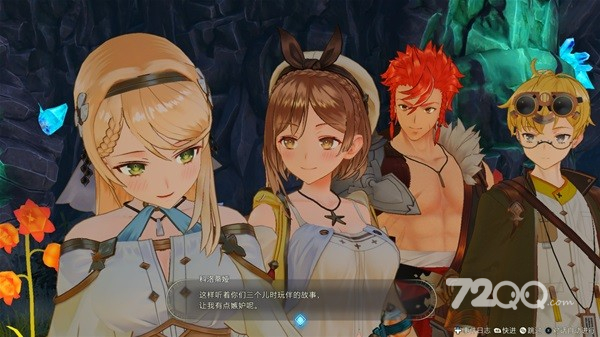
Yes, it's an adventure journey - which means that the Keukon Island area as the stage of the first generation is just a prologue. This is undoubtedly a quite extravagant act. In addition to the stage in the memories, there are also teammates in the memories: the business wizard lady Clodia, the scholar Tao, Lanto with bigger chest muscles, and the tsundere Boss Boss (What? You said these people are big Part of the 2nd generation has also been released, not counting... that, after all, the 2nd generation has been released for a long time).
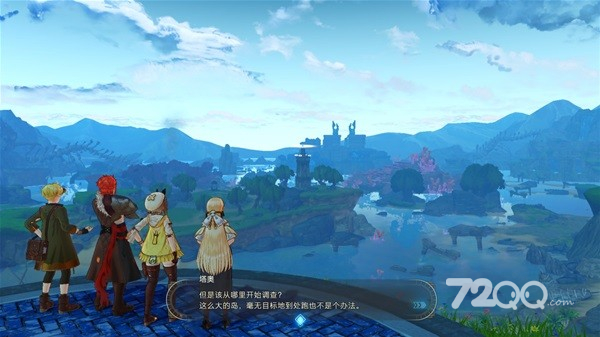
With the old teammates, where the story once started, "Atelier Ryza 3" does not use dozens of simple stirring pot tasks to help players get started like A21-A23, but It is given to a level 20 team at the beginning, and there is not too much alchemy "foreplay" interspersed, allowing players to quickly travel through the places in their memory, and then let the story get to the point more quickly.
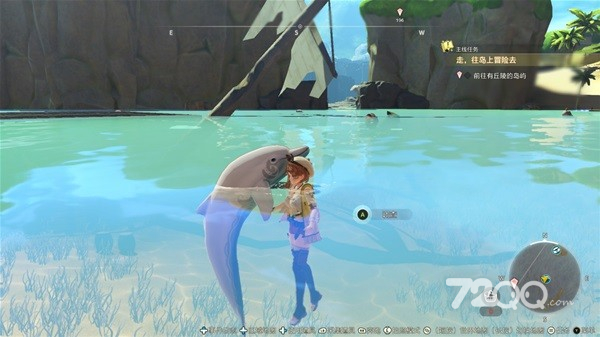
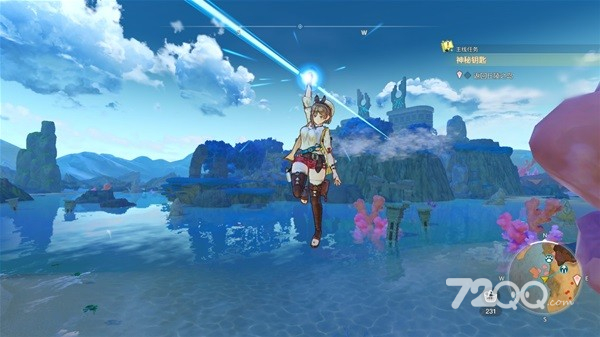
The first impression of "Atelier Ryza 3" is that the scene has become extremely large, and basically every area is seamlessly connected (but you still have to load when entering the room or even going upstairs). If it is still the same as the previous games Likewise, if you see monsters on every map, fight them, and if you see items you collect, you have to do it. Basically, every time you go out, you may not be able to reach the next teleport point and you have to go home.
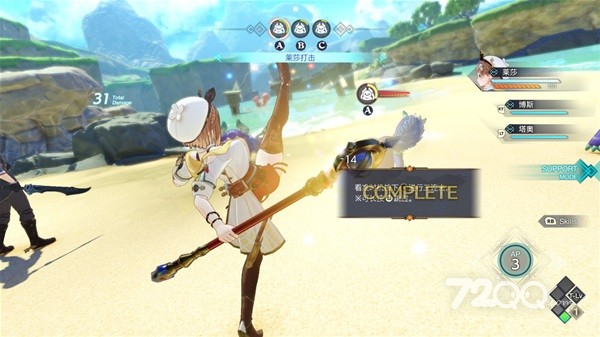

Outside of the huge world, the most obvious improvement is that the game adopts a "real-time" combat system - the reason for the quotation marks here is that it is not a pure real-time combat, but is performed by characters similar to "FF7RE": You need to wait for WT in the future (circle in the lower right corner). The more operations performed in a single action, the longer WT you need to wait for.
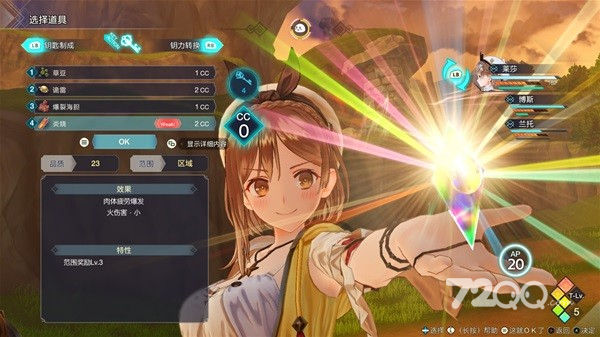
In terms of basic mechanisms, Ryza 3 and Ryza 2 are still very similar: resource circulation is still the core of combat, and then includes "AP points", "tactical level", "CC points" and "waiting time". "Four resources - the first step of the battle is to gain AP points by basic attack, breaking defense or perfect blocking (which can greatly reduce damage); the second step is that AP points can be used to release skills or forcefully use props regardless of the waiting time (- 10AP); the third step is to increase the tactical level used by AP and obtain CC points: then the first difference appears. Originally, only CC points existed as consumable resources for using alchemy props. In Ryza 3, Tactical level becomes another expendable resource.
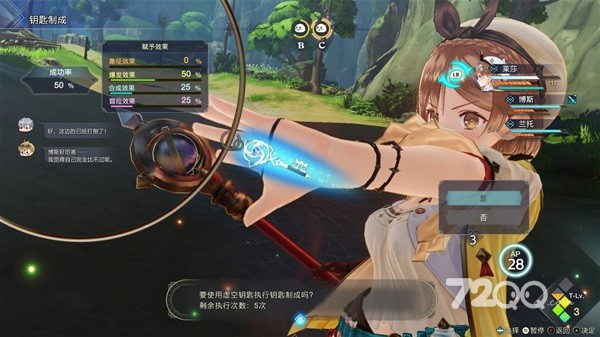
There are two activities that consume tactical levels: making keys and using keys - the game contains two types of keys, one can be obtained from specific landmarks (such as the Islands Clock Tower), which will provide players with collection benefits (such as passive quality improvement); The other is a biological key, which can be activated and obtained when the creature's blood volume is lower than 80%. However, I have not yet studied how the success rate is affected. The key obtained by the creature can be used to activate a powerful BUFF state in combat ( Lasts for 15 seconds) - For example, you have to enter WT after finishing the basic attack combo, but if you are under BUFF, you can continue to attack without stopping: its usage scenarios, for example, if the BOSS charge is increased, then you can Turning the key and hammering hard can directly break the defense and stun.
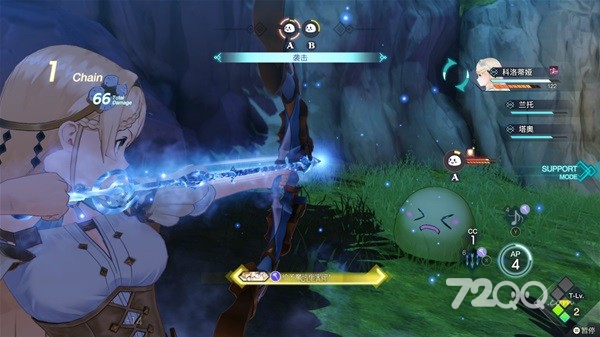
In addition to the key system, another feature of real-time combat is character switching - similarly, after completing a set of skills or combos, switching to the backup character can directly start the next set of actions: Of course, this "stealing time" technique It cannot be used without restraint. There will also be a cumulative slot for substitutions, which accumulates with the player's attack actions. When it is full, substitutions can be made. It is also worth noting that the CC points of the front row and replacement players are not shared. That is, if you want to replace players, remember to drop all the bombs of the front row players before changing.
The "combat command + combo" system in Ryza 2 still exists: after executing the call of teammates, free combos can be triggered. Since each character can only trigger the "combat command" once in each battle, it is necessary to switch before and after Both platoon and switch operator crew members are necessary - to maximize the extra damage from Combat Command combos.
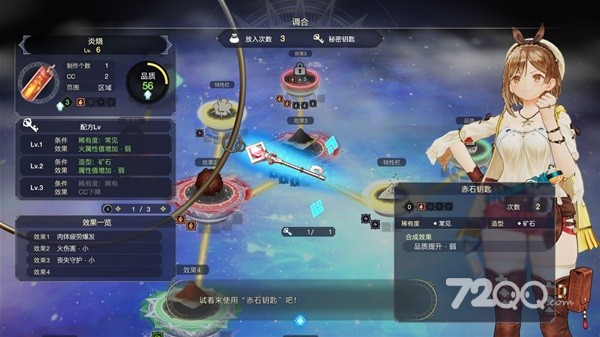
So, someone may ask, what about stirring the pot? When it comes to stirring the pot, the early stage experience is quite similar to Ryza 2. It is still a "molecular formula" to fill in materials. The number of each pit is unlimited but the total amount is limited - then there are basic "required" grids and peripheral optional ones. Select a grid. Each grid will have 1 to 3 trigger effects. You need to make up the number of catalysts in it.
Then the optional grids on the periphery require the number of catalysts in the adjacent grids to be unlocked. This system overall feels a little simpler than Sophie 2's palette (seemingly), and the biggest change added to Ryza 3 is probably that refining can also add key enhancement effects.
So: keys can increase combat, strengthen collection, improve refining effects, and open storage points in the wild. Since they are so versatile, they must be consumables. And why is it not "the alchemist of keys" but "the alchemist of keys"? The Alchemist of the End”?
Ryza 3 also contains a lot of small details and new fun that you can play with, such as: self-built alchemy workshops, fast collection, fewer air walls, and time-limited random tasks.
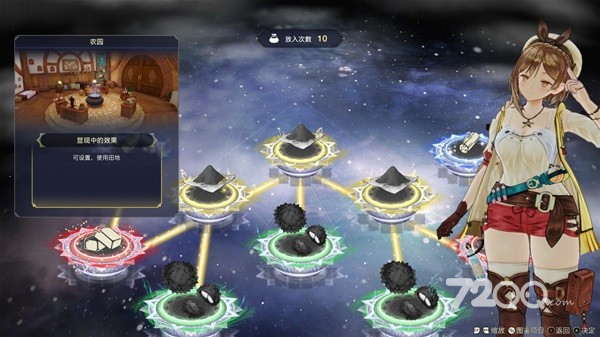
You can build a self-built alchemy workshop after entering a world - there are three basic models to choose from, one that strengthens key generation and world tasks, one that strengthens the refining effect, and one that strengthens SP acquisition (the SP acquisition in this game is also The skill tree is still similar to the 2nd generation, which is the horizontal, vertical and adjacent unlocking mode of Beijing's traffic network).

Fast collection means that most of the collection actions have been relatively simplified. In fact, I was very uncomfortable with it at first. Firstly, the collection judgment range has become larger and I can collect things before I even reach the location. Secondly, there are many actions similar to picking mushrooms. It doesn't squat anymore. However, this interview is a deliberate improvement for the smoothness of the game. Once you get used to the feeling of running around and collecting at the same time, it will still be okay.
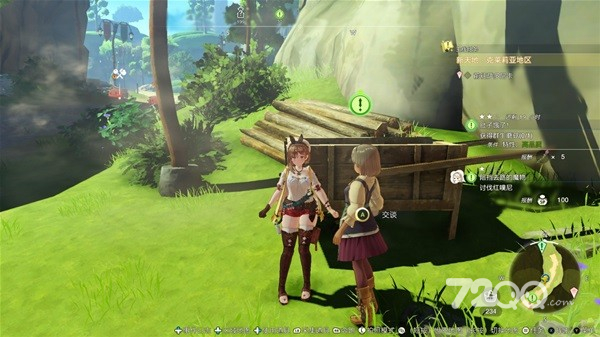
Another change is that there are quite a lot of random side missions in this game, which are roughly like the robbers or passers-by being injured in "Red Dead Redemption 2". Inside the city, materials or products are randomly submitted, and outside the city For junglers, these tasks are basically time-limited, so you can’t just do them without clicking, but you don’t have to regret it if you miss them. One of the things that impressed me was following a shining bird to get special feathers. I don’t know what the subsequent effects are.
The first of these problems may be due to the geometric expansion of the explorable area, which may make players who are new to this series feel a little confused. It is recommended that you go straight to the main line as much as possible in the first two chapters. Many materials in the early stage are not available, and it is impossible to stir the pot. For a reason, there is no point in exploring until the corresponding system is opened. After all, you still need to come back and explore again.
Secondly, the problem of aliasing in the game screen still exists - turning on depth of field and global illumination can greatly improve it, but I don't like this feeling of seeing flowers in the fog if you go a little further.
Finally, I feel that the UI of the 3rd generation is not as beautiful as the 2nd generation.
Overall, Ryza 3 has tried many new actions on the basis of Ryza 2 - the action system is still the same AP/WT mode, but it has been changed to "auto-propulsion", which is indeed in line with the trend of the times. The changes will not cause too much discomfort to veteran players. The key system gives the battle a bit of a "Pokémon" experience, but for the time being, I don't see any technical improvements for stirring the pot.
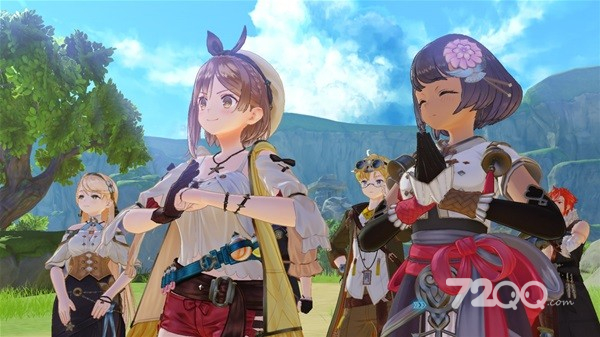
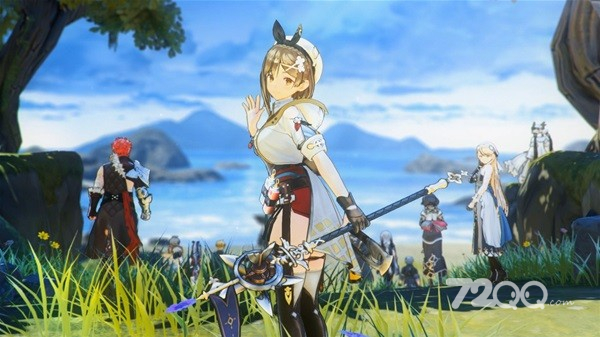
The self-built alchemy workshop, my new wife, and the new world are still as fragrant as ever, but my heart still belongs to Lysa, and I really want to take a nap with Lysa! (Confusion), I look forward to the day at the end of the month when I can stir the pot with everyone.
How about it? Did the background story and gameplay preview of "Atelier Ryza 3" brought to you help you solve the problem? If it is solved, I hope everyone will not be stingy with praise and leave lots of encouragement in the comment area, so that I can be more motivated to bring you more good strategies.